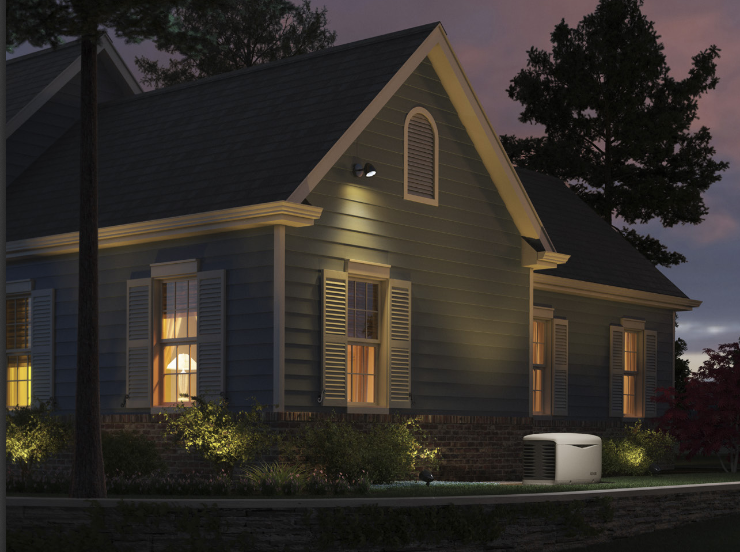
When a big storm is bearing down and you don’t have a generator, you may not have time to take all the safety precautions that are usually recommended such as hiring a pro to install a transfer switch and stocking up on gas. But even without taking those precautions, there are ways to safely get a new generator up and running until you can find an electrician to install the appropriate safeguards. What you want to avoid is connecting the generator to your breaker panel yourself, without an interlock device or transfer switch, which can result in frying your electronics and potentially injuring a utility worker once the power comes back on. Follow these five recommendations to get the power back on safely in no time.
Portable generators have outlets that let you power appliances directly rather than through your home’s wiring. The problem is that you then need extension cords to get power into your home, an arrangement that has risks—creating the potential to become overloaded and arc, or to be punctured if they’re run through open windows or doorways.
But some newer generators have the outlets on a removable console, tethered to one long, heavy-gauge power cord, which is less prone to pinching and is designed to carry the entire electrical load that the generator can power. That allows you to take the console indoors to plug in your appliances while operating the generator outdoors.
Extension cords pose hazards, particularly if they’re used outdoors or to carry the load of high-wattage appliances. But if you have no choice—either because you don't have a generator with a removable console or because the console won’t reach all of the appliances you need to plug in—check the owner’s manual to see what gauge cords it recommends. And make sure that they’re rated for indoor and outdoor use.
Don’t run the extension cords under rugs or allow them to become pinched in windows or doors. Use a rubber doorstop to prevent doors from closing all the way and crimping the cords. You’ll need a separate cord for each outlet on the generator you intend to utilize—using a splitter or surge protector to plug multiple devices into a single extension cord can cause the cord to overheat and arc. Check the cord label for the maximum wattage it’s safely rated to carry, then use our wattage calculator to make sure whatever device you plan on plugging in doesn’t exceed that rating.
If you're just buying a generator, plan on getting one rated to produce the power of every device you’ll want to plug in. Our wattage calculator can quickly help with that task, but keep in mind that using a portable generator’s built-in outlets or power console means you can power only electronics with standard, 110-volt plugs. Hardwired appliances such as a furnace, central air conditioner, or well pump won’t work, nor will those that run on 220 volts, such as electric ranges or dryers.
But it may still be worth buying a generator rated to power all of those appliances, because if and when you have an electrician connect the generator to your breaker panel, you’ll want to know that the model you chose will be able to power your list of essentials.
Generators produce carbon monoxide and can be fatal if used indoors or too close to your home. That includes the garage, even if you leave the door open. And don’t even think about putting a generator in the attic or basement. The only safe spot to operate a generator is outdoors, a minimum of 15 feet from your house—and as far as possible from windows and doors.
Driveways, stone patios, or level patches of grass are all good places to put your generator. And if it’s raining or snowing, you’ll need to cover the generator with a generator tent or cover. You can find model-specific covers online, but it’s fine to grab a generic generator tent at the home center, too.
Portable generators run on gasoline, and most can hold a maximum of around 8 gallons. Depending on the power load, that may only last several hours. Stock up on gasoline and store it in ANSI-approved containers, which have special pressure-relieving mechanisms. Mix the gas with fuel stabilizer and store it outside the house.
And if you’re shopping for a portable generator, consider a model that can be converted to run continuously on propane or natural gas. You'll need a conversion kit and perhaps the help of a pro to install it, but either fuel will provide a more continuous source of power than a few gallons of gas the next time your need it.
Shopping for a generator? Contact South Shore Generator in Wareham, MA.
Source: Consumer Reports
Whether your need is to power your business to keep on your production schedule or your home to keep your family safe and sound, South Shore Generator has the product diversity to meet all of your generator requirements. We are proud to sell and service generators from 2kW to 2000kW single set units and up to as large as 100MW utilizing Generac's innovative Modular Power Systems (MPS).